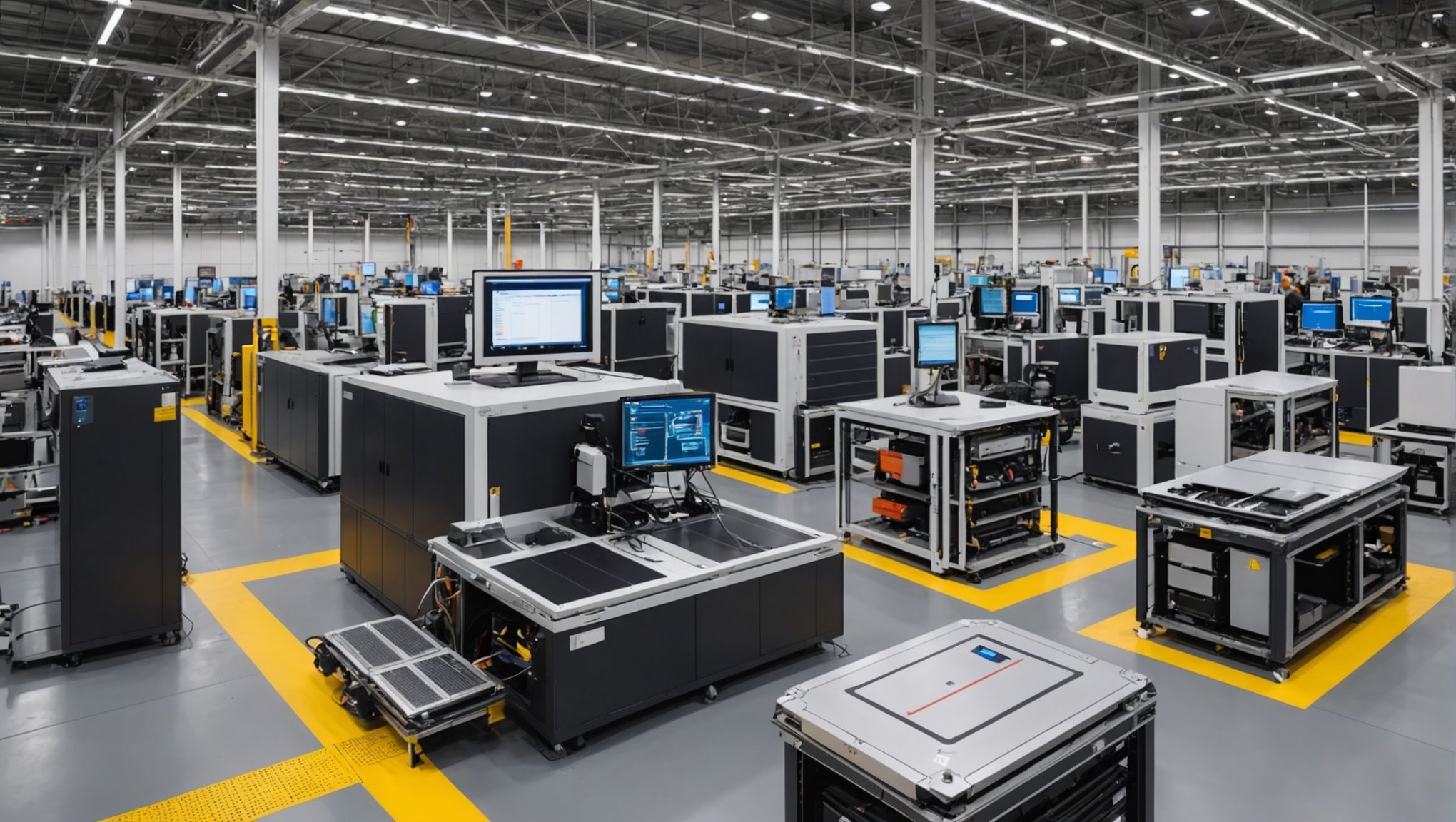Understanding Real-Time Analytics in Smart Manufacturing
In the realm of Smart Manufacturing, Real-Time Analytics plays a pivotal role by enabling factories to make swift, informed decisions. This practice involves the instant processing and analysis of data as it is being generated, allowing for dynamic responses to rapidly changing production conditions.
The significance of real-time analytics cannot be overstated—it empowers manufacturers with up-to-the-minute insights, facilitating optimised processes and enhanced productivity. Imagine being able to tweak production lines instantaneously, improving quality and reducing waste. That’s the power of real-time data!
Topic to read : Enhancing Precision: Innovative Strategies to Boost AI-Powered Fraud Detection Accuracy
However, achieving this efficiency hinges on accurate data processing. For manufacturers, the integrity and speed of data play a crucial role in decision-making processes. Poor data quality or delayed information can lead to inefficient operations and missed opportunities.
Current challenges in this space include managing the vast volumes of data generated by smart machinery and ensuring that this data is processed in a manner that is both accurate and timely. Many manufacturers struggle with data overload, where the challenge lies not just in collecting data, but in extracting actionable insights swiftly.
Additional reading : Unlocking the benefits of using shopee proxy for shopping
In sum, while real-time analytics heralds a new era of manufacturing efficiency, its success is intrinsically linked to the capability of processing data accurately and swiftly.
The Role of Edge Computing in Smart Manufacturing
Edge computing is transforming how manufacturers manage and process data. By bringing data processing closer to the production floor, edge computing minimises latency and enables real-time insights crucial for smart manufacturing. Its architecture involves a network of local devices that handle computations, reducing the dependency on centralised cloud systems.
Manufacturers benefit from combining edge and cloud computing. While cloud computing offers extensive storage and processing capacities, edge computing complements it by handling tasks with immediate processing needs. This synergy optimises efficiency and responsiveness, which are vital in manufacturing processes.
Key technologies boosting edge computing include Internet of Things (IoT) devices, which gather and send data to local nodes for analysis. Machine learning tools are also leveraged at the edge, facilitating smart decision-making based on real-time data streams. These technologies support predictive maintenance, ensuring machinery operates smoothly, reducing downtime and operational costs.
By integrating edge computing, manufacturers can harness the full potential of modern manufacturing technologies. This leads to improved productivity and innovation, keeping them at the forefront of industry advancements. Edge computing, therefore, serves as a pivotal component for manufacturers aiming to stay competitive in a rapidly evolving market.
Successful Implementations of Edge Computing in Real-Time Analytics
Exploring case studies of edge computing in real-time analytics provides insight into effective implementation strategies and measurable outcomes. Many manufacturers have adopted edge solutions to enhance operations and improve decision-making processes.
Case Study Overview
Various manufacturers have integrated edge computing into their systems to revolutionise operations. These real-world case studies highlight the proactive steps taken by companies to optimise manufacturing processes.
Key Implementation Strategies
Successful adoption of edge solutions often hinges on several strategic considerations. Key among them is the deployment of edge devices closer to data sources, reducing latency and promoting swift responses to real-time analytics. Collaboration with specialised vendors ensures seamless integration and maximised technology utilisation. Customising edge architectures to align with specific operational goals is crucial for maximising benefits.
Measurable Results and Insights
Implementing edge solutions has led to notably measurable results. Companies have seen marked improvements in operational efficiency, evident through faster response times and reduced data processing loads on central servers. An in-depth review of these case studies also reveals improvements in predictive maintenance and energy consumption, empowering manufacturers with valuable insights to inform strategic decisions.
These findings underscore the transformative potential and effectiveness of effectively implemented edge computing solutions in the manufacturing sector.
Benefits of Edge Computing for Real-Time Analytics
Edge computing offers significant benefits for real-time analytics by ensuring data is processed closer to its source. This reduction of latency is critical, enabling instant access to current data and enhancing overall system performance. With the rapid growth of IoT devices, efficient data handling at the edge becomes essential.
Implementing edge computing leads to notable enhancements in operational efficiency and productivity. By minimizing the time taken for data to travel to centralized data centers and back, organizations reduce bandwidth usage and processing delays. As a result, systems are quicker and more reliable. This efficiency translates into tangible benefits like reduced operational costs and improved customer satisfaction.
Improved decision-making capabilities are another advantage, thanks to the timely data access facilitated by edge computing. By having real-time data at their fingertips, decision-makers can react swiftly to changing conditions and trends. This is especially beneficial in industries where seconds matter, like healthcare or finance, enabling businesses to capitalise on opportunities instantly and mitigate risks effectively.
In conclusion, edge computing greatly contributes to improved efficiency, sharper decision-making, and reduced latency, providing a robust infrastructure for handling real-time analytics efficiently.
Addressing Challenges in Edge Computing Implementations
Edge computing brings innovative possibilities and significant challenges. Integrating this technology into existing systems often presents hurdles. Notably, compatibility issues are prevalent as organisations strive to incorporate new, decentralised computing models into their existing centralized infrastructure. This shift demands careful planning and execution to manage diverse data sources and ensure seamless communication across devices.
Moreover, ensuring security remains a critical concern. With data processed near the source, traditional security measures might not suffice, leading to increased vulnerabilities. Thorough risk management strategies are crucial. Implementing comprehensive security protocols helps safeguard against potential breaches and data loss, providing a more secure edge environment.
To overcome these challenges, organisations should adopt a modular approach, allowing for flexible integration and updates. Emphasising robust network architecture can mitigate connectivity issues, ensuring data flows efficiently between edge devices and the central systems.
For effective risk management, proactive measures, like conducting regular audits and monitoring, are essential. Establishing clear operational procedures can help organisations anticipate potential pitfalls and address them proactively.
Addressing these challenges with strategic solutions and a strong focus on risk management enables a smoother transition to edge computing, unlocking its full potential while maintaining system integrity.
Industry Trends and the Future of Edge Computing in Manufacturing
The manufacturing industry is witnessing transformative industry trends that are reshaping operations. A key trend is the shift towards edge computing, which provides real-time processing at or near the data source. This enables quicker decision-making and reduces latency, crucial for maintaining efficiency.
Emerging technologies like 5G and the Internet of Things (IoT) are bolstering these changes. 5G technology enhances connectivity and data transmission speed, crucial for seamless integration of edge devices. IoT, on the other hand, exponentially increases data collection points, driving the demand for enhanced processing capabilities at the edge.
As manufacturers embrace these innovations, the future promises smarter, more efficient systems. Predictions suggest that real-time analytics will become standard, allowing factories to adjust operations virtually instantaneously based on data insights. This adaptability is vital for enhanced productivity and competitiveness.
The convergence of future technologies like artificial intelligence and edge computing will further influence this landscape. AI’s integration at the edge is anticipated to optimise processes with machine learning algorithms, refining production lines and predictive maintenance strategies.
In summary, industry trends, coupled with emerging technologies, are set to revolutionise manufacturing. The evolution towards smart factories is inevitable, driven by edge computing and its applications in enhancing real-time analytics and operational efficiency.
Actionable Insights for Implementing Edge Computing Solutions
Unlocking the potential of edge computing in manufacturing requires careful implementation. Following best practices is vital for seamless integration. Start by identifying processes that would benefit most from edge computing, such as data-intensive tasks that require low latency. This strategic approach ensures a significant return on investment.
Adhering to industry standards enhances compatibility and security. The Industrial Internet Consortium (IIC) provides frameworks that facilitate the adoption of edge solutions, ensuring interoperable systems across platforms. Their guidelines are instrumental in maintaining robust communication protocols and consistent data management systems.
Manufacturers should leverage a variety of tools and resources on their edge computing journey. Consider platforms like the Linux Foundation’s EdgeX Foundry. It’s a vendor-neutral, open-source platform designed specifically to facilitate collaboration and innovation in edge computing. This framework supports device data collection and offers analytics services that maximise efficiency.
In practice, every implementation should:
- Evaluate current infrastructure for edge readiness
- Define clear objectives and expected outcomes
- Opt for scalable solutions to cater to future technologies
By focusing on these best practices, manufacturers can effectively harness the transformative potential of edge computing, thus driving innovation and efficiency within their operations.











